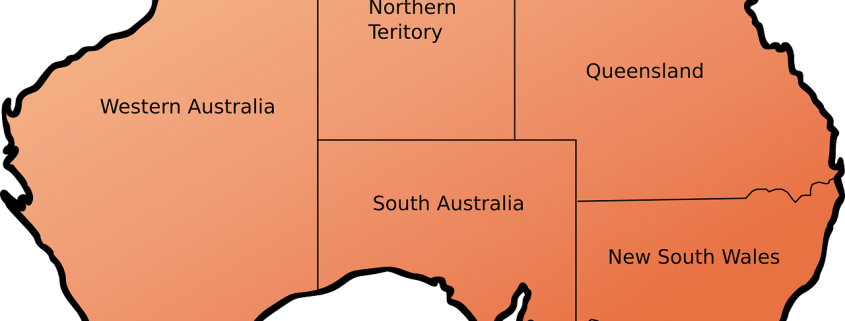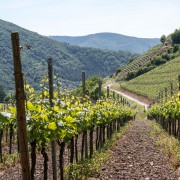A New Era for Australian Wines
Australia holds the title as one of the world’s largest wine producers and this year was the region of focus at the Vancouver International Wine Festival. Australia has been trying to stray from its original image of mass produced bulk wine towards more premium, high-valued wine in order to compete with old world countries such as Italy and France. Their growing interest in wine value and regionally distinct wines make Aussie wines a good selection to add to your menu.
In Australia, wine is produced within 60 designated wine regions totaling over 160,000 hectares of land. Half of the country is desert, however, so a majority of the areas reside in the south portion of the continent. South Australia is responsible for over half of the country’s wine production while the remainder of the country provides the rest. The dry climate of the region makes for mostly dry wines, but Australian winemakers are beginning to create varieties that mimic the vineyard in which they were produced. This uniqueness is what is drawing their two biggest consumers, Great Britain and North America, and causing Australian suppliers to become more wary that grape quality isn’t related to larger volumes.
A good way to catch consumer’s attention to the new, up-and-coming Australian wine is to put the wines you plan to offer in its own category separated by region. Many people become curious about wines that aren’t grown by the popular wine-producing areas, such as California, Italy or France. Australia, to many, doesn’t appear as the typical geographical location to grow grapes and produce fine wines. A good way to draw audience attention to a wine and introduce them to a region they may not be familiar with is to feature the wine. This will show consumers that the restaurant has confidence in the region and that the wine is at the same level of quality as the rest.
So what Australian wines should you feature in your restaurant? Each restaurant has its own preferences when it comes to what is on their wine lists, but Uncorkd has a few suggestions.
Shiraz/Syrah
Shiraz is the number 1 grape produced in Australia, accounting for 18% of the total plantings. This red wine is one of the original grape varietals introduced to the region and has been blended with other grapes to produce unique wines such as Shiraz Cabernet. Lighter Shiraz comes from cooler climates and has hints of plum, pepper, and olives. These are typically more tart and fruity in flavor. It is suggested to pair this type with lighter, delicate foods. Shiraz made in warmer climates are more heavy with blackberry, mint and sweet tobacco. They are comprised of a rich texture and follow with a tannin finish. Drink heavy Shiraz with bold flavored foods, such as barbecue.
Chardonnay
Chardonnay is the most widely produced white grape in the world, so why not try adding one to your menu from Australia. Chardonnay leads the white grape plantings at 15% and typically comes from cooler regions. These Chardonnays are usually light-bodied and unburdened by oaky flavors, like those that can be found in California. These wines have a tart, fruity flavor with slight stony finish that comes from the soil.
Semillon
Semillon makes up only 5% of the grapes in Australia and is a close relative of chardonnay. Young semillon is crisp, dry and lemony but when aged, it becomes more bodied and takes on tastes of fig, toast and honey. These wines can successfully age up to 20 years, and restaurants can experiment on what vintage they want to serve to guests. Semillon, both new and old, pairs well with a variety of seafood.
Malbec
Malbec is a unique Australian wine that was big in 2000 but is starting to make a comeback. It is only found on 450 hectares of land within Australia. When originally introduced, Malbec served as a blending wine combined with Cabernet Sauvignon or Shiraz. It is a rich wine, tannic wine that has flavors of blackberry and violets. Malbec would be a great wine to implement if a restaurant sells a lot of red or gamy meats.
- Sommelier Surge in Restaurants - August 7, 2015
- 3 Up-and-Coming Restaurant Industry Trends - August 6, 2015
- Millennial’s Impact on the Wine Industry - August 4, 2015










